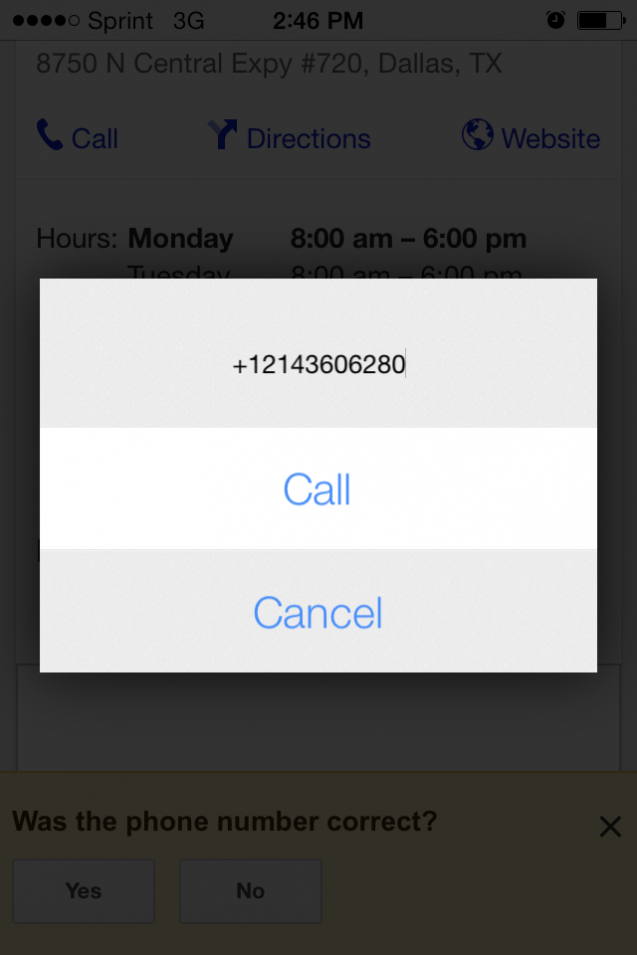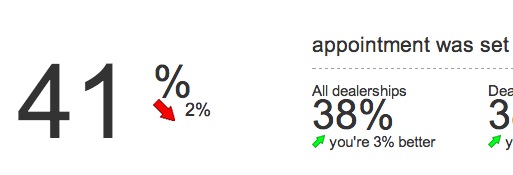 Did you know that the majority of your calls come from your website?
Did you know that the majority of your calls come from your website?
For marketers selling a service or an expensive product, this statement is very accurate and proves that you can’t afford to leave call conversions out of your analytics.
Fortunately, many marketers have started using call tracking to recognize phone calls from their digital marketing and website. The bad news is that most marketers are still looking at the wrong metrics and ignoring the metrics they SHOULD optimize.
Bad Metric: Number of Calls from PPC & Organic Sources
This simpler call metric can be a starting point, but, depending on industry, between 50-75% of calls are invalid calls or do not contain a sales opportunity, so tracking them could be a misrepresentation of good data.
For example, a study by Century Interactive of 342 car dealerships showed that only 34.6% of paid search calls to dealerships were actually sales calls (meaning the caller was inquiring about a particular car in inventory). Counting only “number of calls” received by PPC might look good, but in reality, only a fraction of those PPC calls are valuable.
Instead, count how many appointments are being set from these calls, or how many sales are made.
If your company receives too many calls to analyze on your own, consider using crowd-sourced review tools to help you analyze these calls. Humanatic is a crowd-sourced call categorization tool, which uses human reviewers to determine what happened on a call, and if a conversion occurred. For the example above, Humanatic reviewers were asked if each call contained an inventory discussion. If it did, the call qualifies as a sales call. The reviewers are also asked if an appointment was booked on each call. In the automotive industry, this “booked appointment” is considered a conversion.

The important metric to measure is the number of quality calls you receive. Counting sales calls or booked appointments are both better options than simply counting calls.
Bad Metric: Duration of a Call
Many agencies and marketers will establish a “call duration standard” to help them classify/categorize “quality calls.” This seems like a nice substitute metric when the information for classifying calls is insufficient or too difficult to gather. In reality, this is a bad metric, and does not provide you with an accurate representation of a “quality call”.
For a lot of businesses, a long call does not mean a good call.
One of my clients, a national chain of windshield glass repair shops, trained their staff to drive phone calls to an in-store visit for a Free Estimate. If the agent got caught up in a 10 minute conversation answering a bunch of questions, the odds of booking a Free Estimate went way down! For this client, a longer call duration is actually a negative indicator. They ended up replacing the Call Duration metric with a scoreboard of which digital campaigns resulted in the most Free Estimates.
Consider your last call with a major airline or even a home service company with sub-par service: a call over 10 minutes was probably not one that provided the best service. Instead, focus on calls that actually lead to a conversion (like a sale or a booked appointment). These are the calls that produce results, and the ones on which you should optimize.
Bad metric: Pick Up Time
To better understand the quality of service provided at their companies, many marketers will measure how long it takes for someone to answer the phone.
One insurance client used to brag about a 98% answer rate and an average pick-up time that was under 6 seconds. We suggested adding another metric that measured (1) what percentage of callers actually connected to someone who could help them and (2) how long it took for those connections to happen.
Only 57% of the company’s calls were ultimately connected with someone who could help the caller. The other 40%+ gave up on hold after a few minutes or were forwarded to voicemail boxes that were too full to accept new messages. Yikes. As for the average connection time on those 57% of calls that did connect? Close to 45 seconds. Yikes again.
This is perhaps the most misleading metric of all! Time to answer only proves that the receptionist answered the phone, and the rest of the customer experience is forgotten.
Instead, focus on how long it took to connect to a qualified employee that could help the customer. For a car dealership, this means the sales person the caller is connected to after the receptionist transfers them. For a dentist office, this means the receptionist that handles scheduling after the caller is taken off hold. In either case, faster is best.
Tip: If this metric has a pretty long average, consider using a phone bridge to get the caller to the correct department as quickly as possible.
Understanding the returns from your digital marketing can be rough—don’t be misled by empty metrics, especially with phone calls! Focus on channels that provide data-rich insight, and you’ll be that much closer to the optimal marketing ROI you crave.
Images by Century Interactive



